Photography and Photographers
Episode in a small town library
Ian Breakwell's unusual photograph documents an "episode" that took place in an unnamed small town library in 1970. The episode seems to be a library user somehow transforming into, or sprouting, printed pages.
"Episode in a small town library" - Ian Breakwell, 1970
The only background information about the photograph that I've been able to find comes from Clare Qualmann's article "The Artist in the Library":
More detailed research into Breakwell's extensive archive held at Tate Britain did not provide answers in written form. Several versions of the image were published in journals, including Fotovision (August 1971), Art and Artists (February 1971) and Stand Magazine (Winter 1997). The different paper stocks that they were printed on enable more detail to be seen than the digital version that I had looked at before – in Art and Artists the photograph was reproduced on a newsprint insert to the magazine that is very different from the glossy black and white of the others. In this version, the chicken-wire frame underneath the newspaper is more visible, as are the titles on the bookshelf behind – Art and Civilization is clearly legible.
The version published in Fotovision has a completely different feel – instead of The Guardian newspaper on the table the artist holds a copy of Typographica magazine in his hands. Although this dates from 1964 (the photograph was taken in 1970), its cover design (an assemblage of logos arranged in a dense slanting pattern across the cover) juxtaposes old and new – the 'timeless' look of the traditional library space with the contemporary graphic design of the journal, and the branding that it is presenting. The existence of multiple versions suggests time spent in the space – time to shoot multiple images, test and trial different ideas and perform the image repeatedly (rather than a hit-and-runundercover-quick-photo-before-anyone-notices).
Posted By: Alex - Tue Jul 09, 2024 -
Comments (0)
Category: Photography and Photographers, Performance Art, Surrealism, Libraries, 1970s
Miss Dial
In 1949, Terry Leah won the title of "Miss Dial" in a contest sponsored by Dial Soap. As far as beauty titles go, this one wasn't that unusual. But what was unusual was that, as part of the responsibility of being Miss Dial, Terry had to take a bath, using Dial Soap, in the window of Eckerd Drug Company in Charlotte, North Carolina.Adding to the public exposure, Dial promised that the person who took the best photo of Terry as she bathed would win $25.
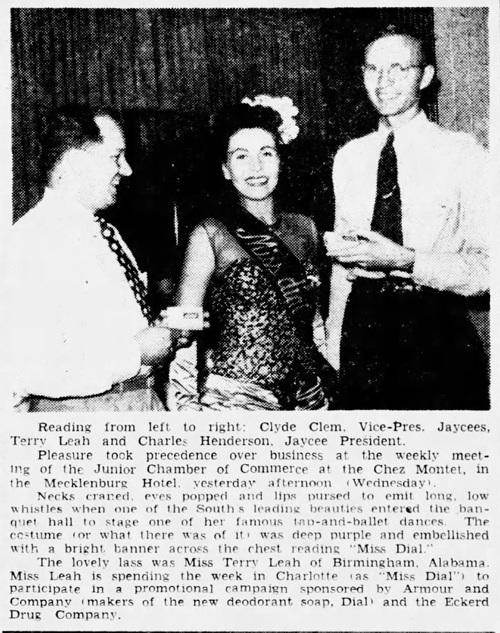
Charlotte News - July 7, 1949
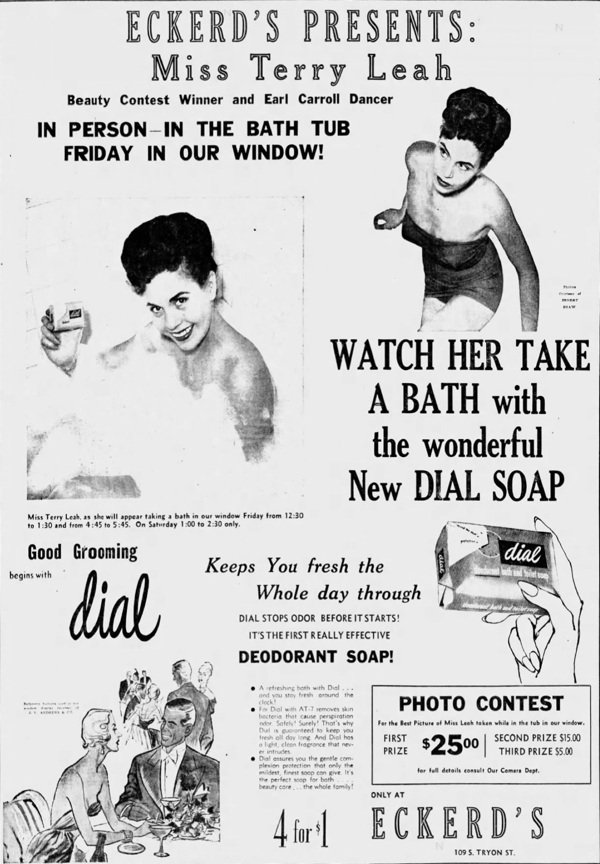
Charlotte Observer - July 8, 1949
Young Dickie Higgins was determined to win that prize. I'd bet that was the most exciting day of his life up until then. Unfortunately I haven't been able to find out who did win the photo prize.
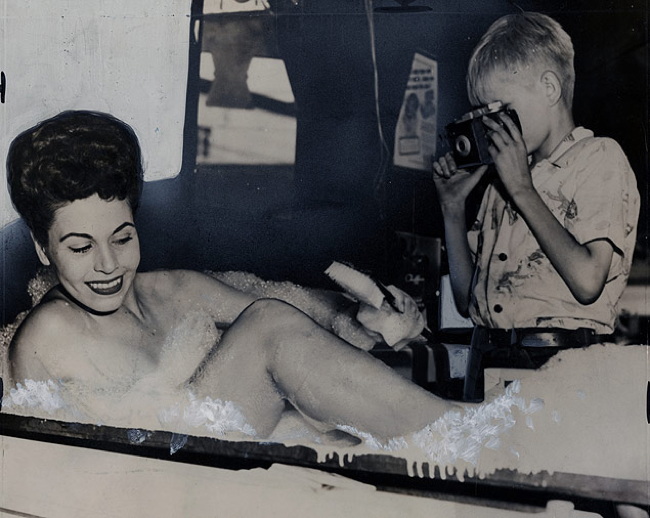
"Dickie Higgins takes a shot of dancer Terry Leah, who is posing in a bubble bath in a Charlotte, North Carolina, store window advertising a new line of bath soap."
NY Journal American - July 28, 1949
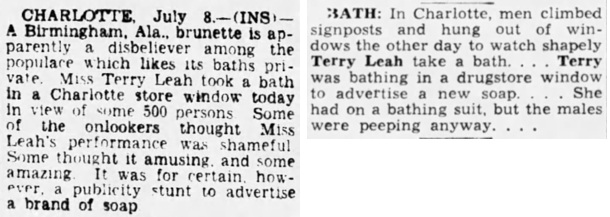
(left) Greenville News - July 9, 1949; (right) Raleigh News and Observer - July 14, 1949
Posted By: Alex - Mon Apr 22, 2024 -
Comments (0)
Category: Awards, Prizes, Competitions and Contests, Hygiene, Photography and Photographers, 1940s
Gestalt Shift Bird Image
The image below is a single-exposure photo. It wasn't created by Photoshop. Knowing that, it took me a long time to make sense of the image (because my brain refused to see how it could be a scene from real life). My wife, on the other hand, figured it out right away.Some info about it from PetaPixel:
PetaPixel also explains how to make sense of it, if you're stuck.
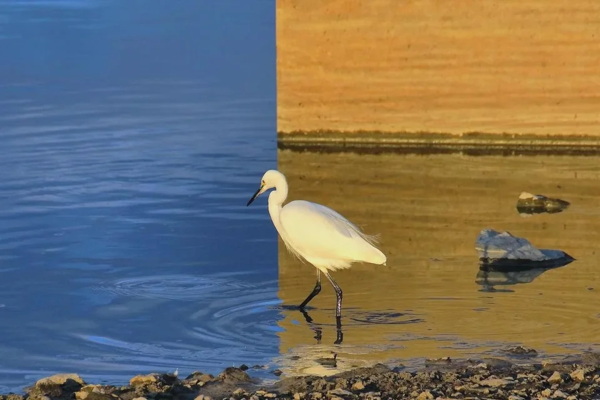
via TYWKIWDBI
Posted By: Alex - Thu Mar 21, 2024 -
Comments (6)
Category: Photography and Photographers
Pigeon Drones
Read all about the wartime practice of mounting cameras on pigeons.At Wikipedia.
And at Public Domain Review, where there are more pictures.
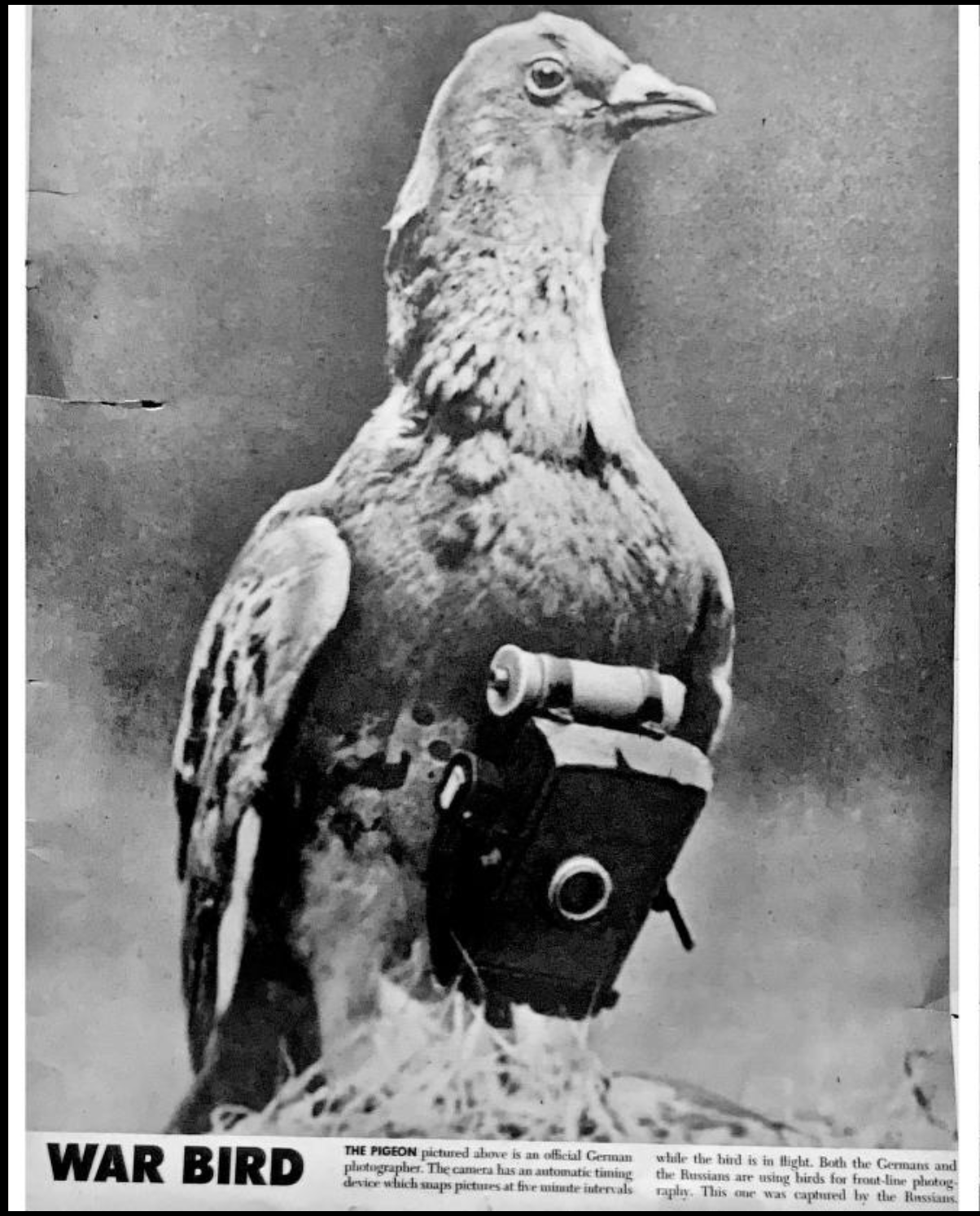
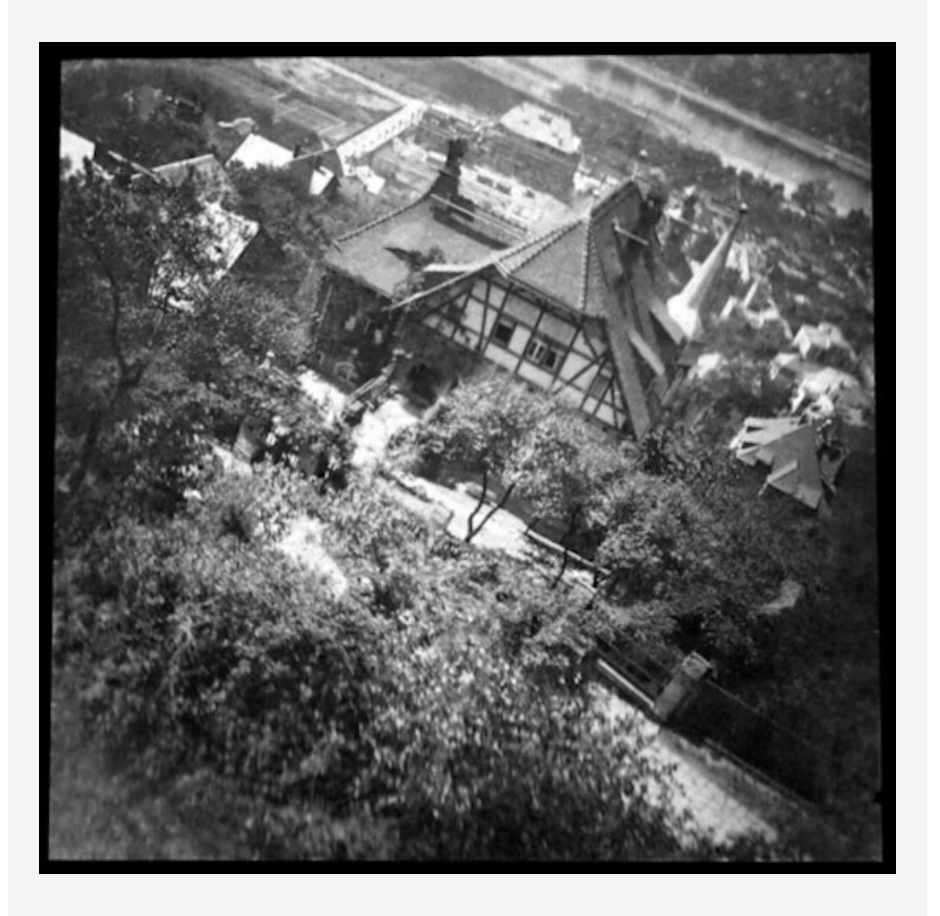
Posted By: Paul - Wed Jan 17, 2024 -
Comments (0)
Category: Animals, Inventions, Photography and Photographers, War, Twentieth Century
Vector Portraits by Andrew Bush
"Photographs made while travelling 50 to 70 mph in Los Angeles and other parts of the Southwestern United States." 1989-1997.More info: andrewbush.net
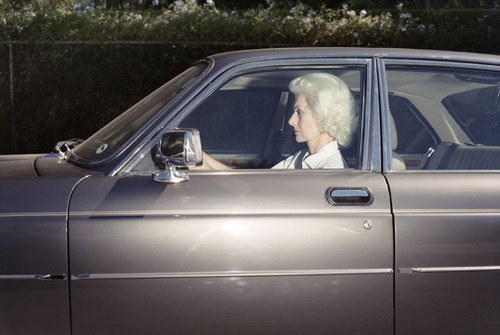
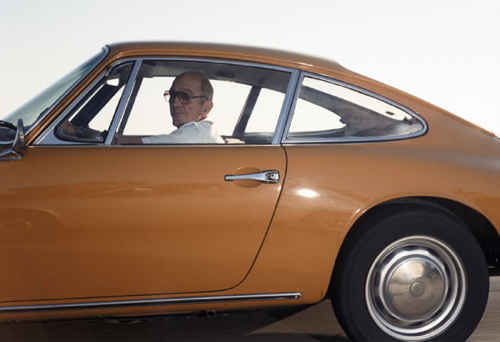
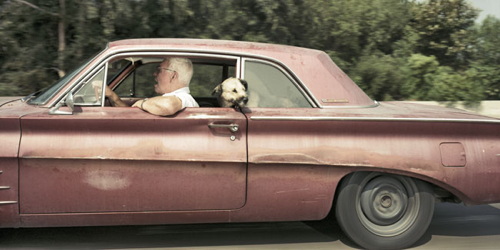
via Vintage Annals Archive
Posted By: Alex - Thu Jan 11, 2024 -
Comments (6)
Category: Photography and Photographers, Cars
Finnish Floating Trees
A bizarre image, but not an optical illusion or some kind of darkroom trick. It shows trees in Finland strung by a cable over a road as camouflage during World War II. As explained by PetaPixel: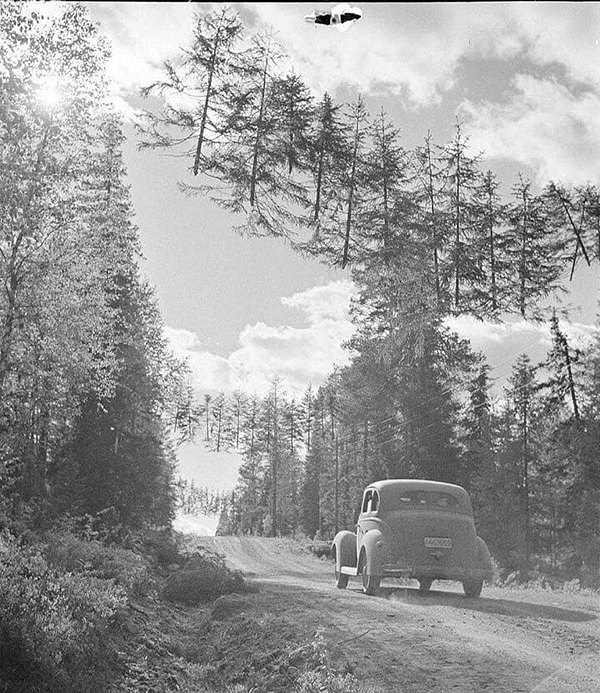
More info: Finnish Defence Force's photographic archive
Posted By: Alex - Sun May 14, 2023 -
Comments (1)
Category: Photography and Photographers, War, 1940s
A comparison of teflon and plastic
From the Hagley Archive's collection of DuPont Product information photographs.Definite industrial chemist as dominatrix vibe.
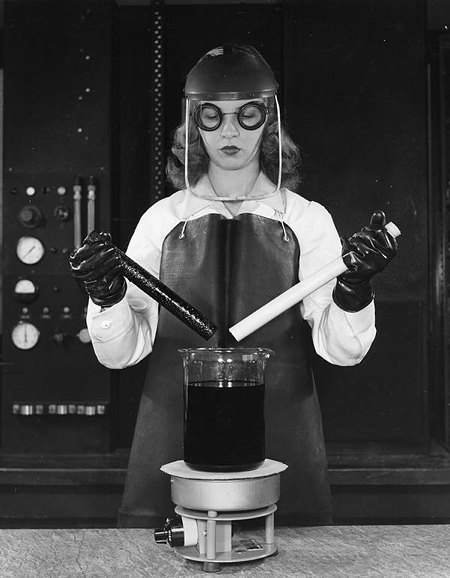
An explanation:
A photo of another chemist doing the same thing, but it doesn't have the same vibe to it:
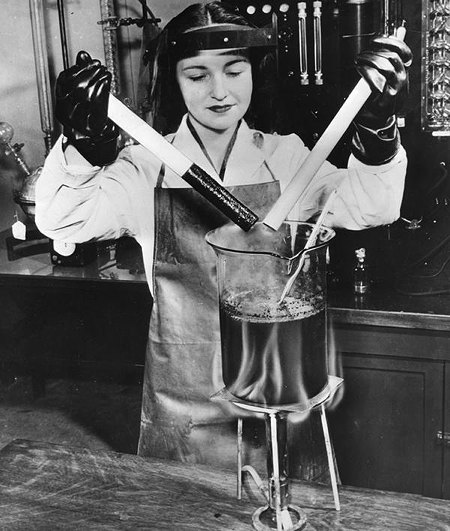
Posted By: Alex - Sun Mar 26, 2023 -
Comments (3)
Category: Mad Scientists, Evil Geniuses, Insane Villains, Photography and Photographers, Science, 1940s
A third leg
Back in the nineteenth century, Alexander Robinson operated a photographic studio on the Isle of Man. In 1885 he applied for a British patent (British Patent Specification 15,376) for an unusual invention — a fake third leg, which he envisioned using as a prop in his studio.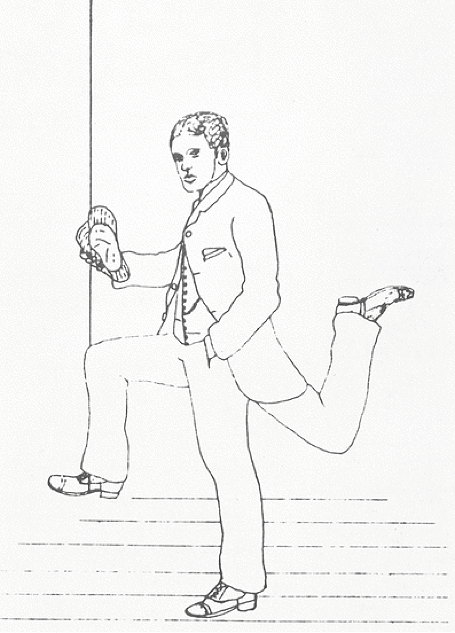
From his patent application:
His invention makes more sense once you know that the Isle of Man's heraldic coat of arms consists of three legs. I imagine that tourists would come to his studio to get a photograph of themselves with three legs, just like the Isle of Man.
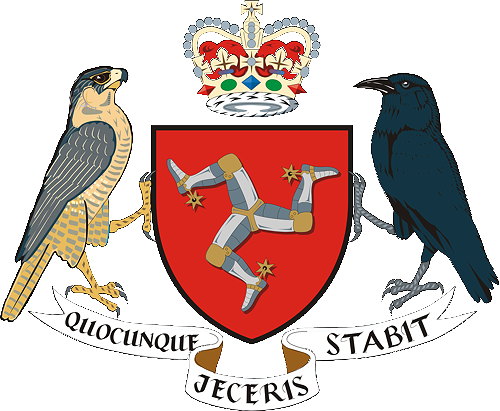
I don't know if Robinson was ever granted a patent for this. The British patent office, unlike the American one, is not fully searchable online. More info: History of Photography journal
Posted By: Alex - Tue Mar 14, 2023 -
Comments (3)
Category: Photography and Photographers, Patents, Nineteenth Century
Miss Yashica Gold Venus
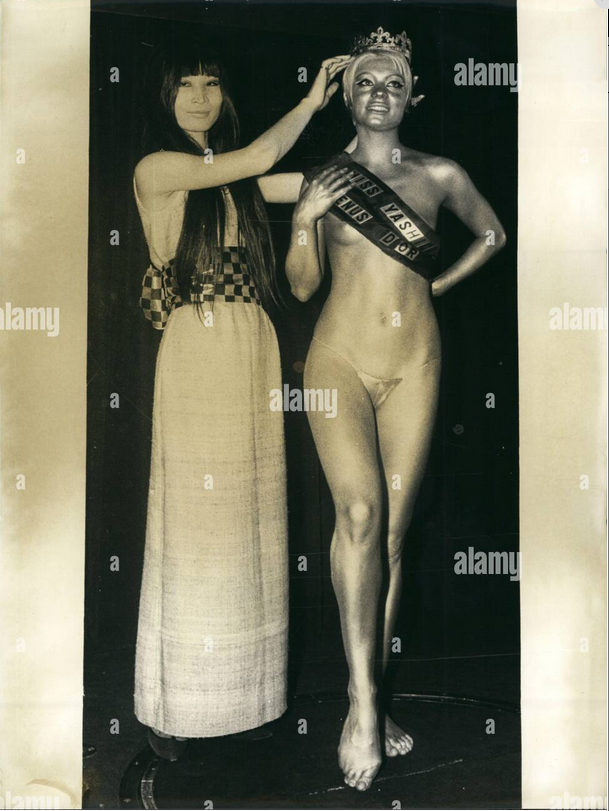
20 year old Lova Moor, Cabaret performer at the Paris ''Crazy Horse Saloon'' was elected ''Miss Yashica Gold Venus'' under the sponsorship of the well launching on the French market of the new Electro 35 Mecanicor Camera produced by Yashica.
Source.
Posted By: Paul - Sun Feb 12, 2023 -
Comments (3)
Category: Awards, Prizes, Competitions and Contests, Beauty, Ugliness and Other Aesthetic Issues, Photography and Photographers, 1960s
Color photographs to fight crime
Use color film so you can see the blood better.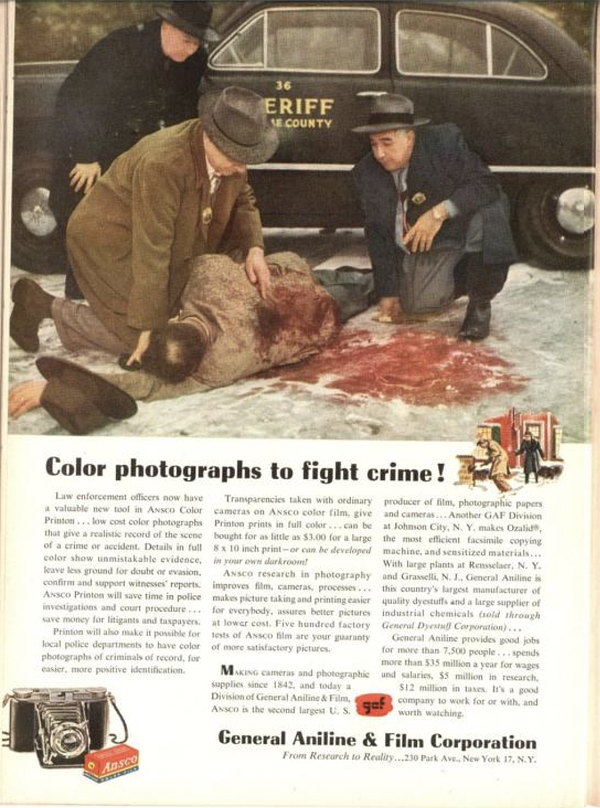
Posted By: Alex - Wed Nov 16, 2022 -
Comments (1)
Category: Photography and Photographers, Advertising, 1950s, Blood

| Who We Are |
|---|
| Alex Boese Alex is the creator and curator of the Museum of Hoaxes. He's also the author of various weird, non-fiction, science-themed books such as Elephants on Acid and Psychedelic Apes. Paul Di Filippo Paul has been paid to put weird ideas into fictional form for over thirty years, in his career as a noted science fiction writer. He has recently begun blogging on many curious topics with three fellow writers at The Inferior 4+1. Contact Us |




